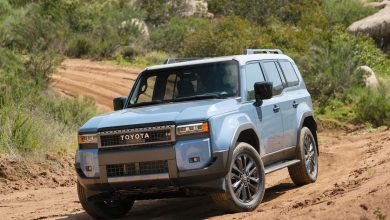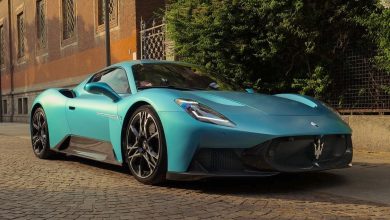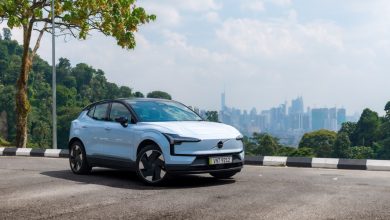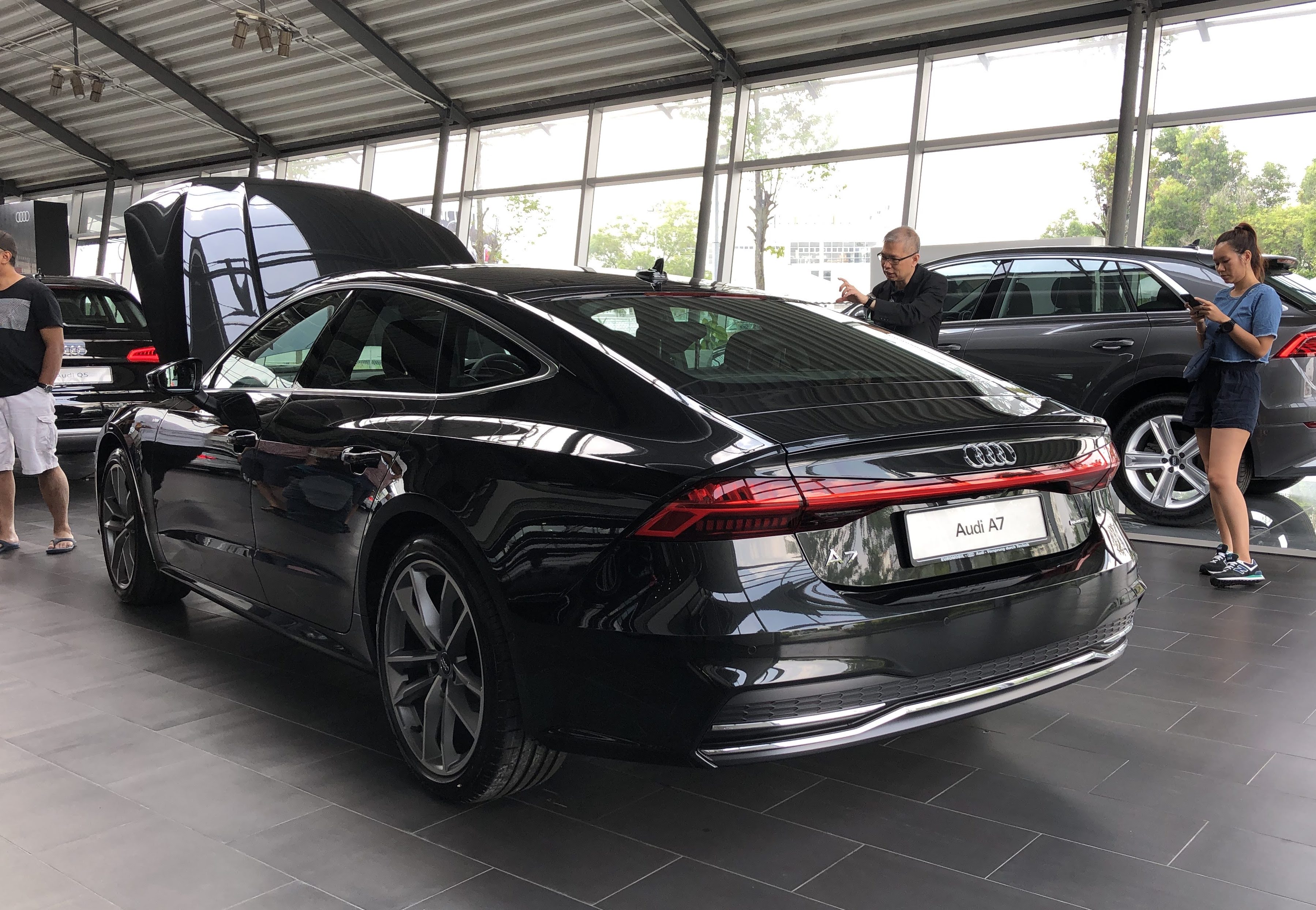
For the Malaysian buyer who pays RM609,000, this all new Audi A7 Sportback comes with a rather high specification level, which is S line which is powered by a petrol V6 TFSI offering 340PS and 500Nm. From rest, 62mph is reached in 5.3 seconds and its top speed is 155mph. In terms of efficiency, up to 40.4mpg combined is possible, with a CO2 low of 158g/km.
Specification will be appropriately high, with LED front and rear lights and 19-inch alloy wheels maximising presence externally in Sport versions, and Twin leather- upholstered seats with full electric adjustment upfront and LED ambient interior lighting setting the scene inside.
Technology features common to both levels will include the fully digital Audi Virtual Cockpit, MMI Navigation Plus with MMI Touch, the Audi Smartphone Interface and the Audi Phone Box with wireless charging for QI-enabled compatible phones. The list of electronic driver assistants will also feature the Audi Parking System Plus with rear-view camera, the Audi Pre-sense Front collision warning and automatic braking system and the Lane Departure Warning system.
S line specification ramps up the visual appeal even further with 20-inch alloy wheels, HD Matrix LED headlights with dynamic front and rear indicators and coming/leaving home animations, sport suspension lowering the body by ten millimetres, and S line-specific body styling. It also lends the cabin a more dynamic air through generously bolstered front sport seats upholstered in leather and Alcantara and S line-specific interior detailing.
Another core component of the standard technology package benefiting all A7 Sportback models is the new mild hybrid drivetrain (MHEV) made possible by the newly introduced 48-volt primary electrical system.
At speeds of between 34 and 99mph, it enables the V6 engines to be deactivated and the A7 Sportback to coast in freewheeling mode. The Belt Alternator Starter (BAS) re-fires the engine smoothly and comfortably after coasting, and is capable of channelling up to 12kW of energy back into the lithium ion battery during recuperative braking.
The start-stop function has also been significantly expanded and now activates at 13mph. In combination with the standard front camera, the engine is restarted predictively while at a standstill as soon as the vehicle ahead begins to move. In real-world driving, the MHEV technology reduces fuel consumption by up to 0.7 litres per 100 kilometres.
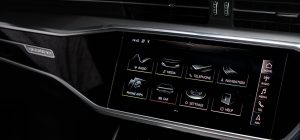



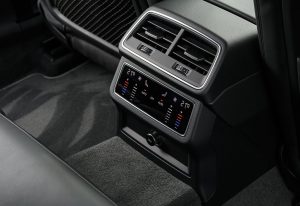
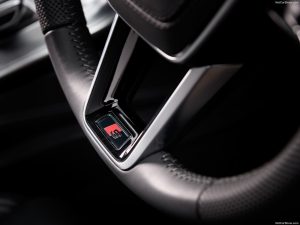

quattro with ultra technology
The two engines work with a seven-speed S tronic twin-clutch transmission (55 TFSI) and an eight-speed tiptronic (50 TDI), and their outputs are proficiently managed by the latest iterations of the quattro drivetrain. For the TFSI engine, the efficient quattro with ultra technology will channel drive to the rear wheels in a split-second when necessary.
The drivetrain with its equally weighted comfort, efficiency and performance focus is complemented by a platform developed according to the same philosophy. The new electronic chassis program (ECP) – the central controller for the chassis – and the four suspension options including updated adaptive air suspension make the car feel supple and luxurious during cruising without curbing its ability to iron out more challenging roads.
Many aspects of the core suspension concept have been newly developed. Sport models feature an absorbent yet tightly controlled conventionally sprung set-up, while S line versions feature the sport suspension that lowers ride height by 10 millimetres. Steel-sprung suspension with electronically controlled damping and the self-levelling adaptive air suspension are available as options for both variants.
Progressive steering with a ratio that becomes more direct as lock is applied is standard, and has been reworked with a focus on providing more detailed road surface feedback.
For optimal ability through the switchbacks and increased lower-speed manoevrability dynamic all-wheel-steering is also available from the options list, as is the quattro sport differential which actively distributes drive torque between the rear wheels for maximum cornering adjustability.
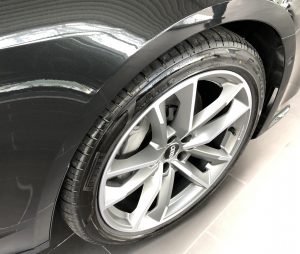
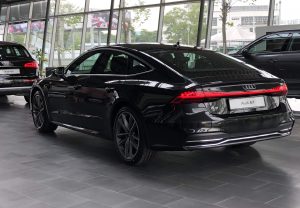


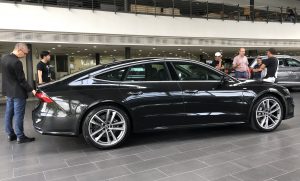
A7 Exterior
With its large surfaces, sharp edges and taut, athletic lines, the latest A7 Sportback draws inspiration from the Audi prologue concept study that spearheaded the introduction of the new Audi design language. In common with the A8 which was the first to take the new direction into series production, one of its key defining features is a flat light strip which creates a continuous light pattern across the rear – a distinction that will mark out all models in the upper echelons of the Audi range in future. When the doors are unlocked and again when they are locked, fast-moving light animations play in the rear lights and in the headlights, highlighting the Sportback’s imposing dynamics while standing still.
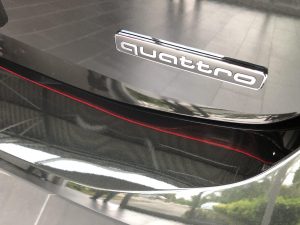
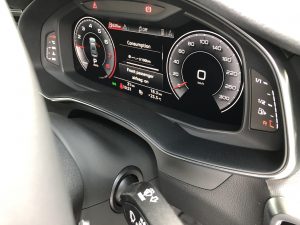
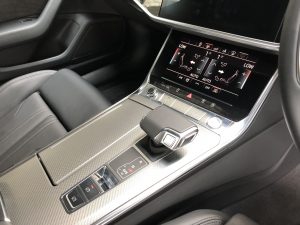

A7 Interior
The cabin projects the new Audi A7 Sportback even further into the future. It has been conceived according to a reduced, clean design language, with an emphasis on horizontal lines and a sleek instrument panel adding to the feeling of airy spaciousness. Compared with the previous model, interior length has increased by 21 millimetres, resulting in more rear knee room. Rear passengers also enjoy more head room. A three-seat rear bench is standard for UK models, and when its backrest is fully stowed the luggage compartment capacity expands from 535 litres to a generous 1,390 litres.
The communications hub of the new A7 Sportback is a new MMI touch response operating concept based around 10.1-inch upper and 8.6-inch lower touchscreen displays which appear to blend into the dashboard when switched off. The two large, high resolution touch displays replace the rotary controller and satellite button system used by the previous model. They provide haptic and acoustic feedback as confirmation when a fingertip triggers a function.
With its comprehensive connectivity, the Audi A7 is perfectly equipped for long-distance touring. It offers customers the same broad range of convenience, safety and customisation technologies as the new Audi A8. Up to seven drivers can store their preferred settings in individual user profiles, and as many as 400 parameters can be personalised.
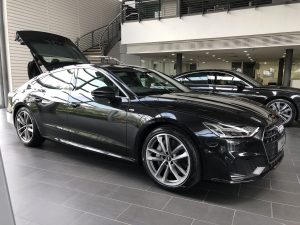
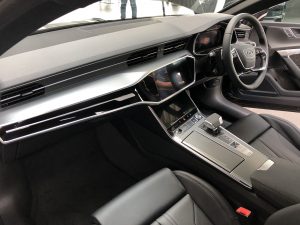
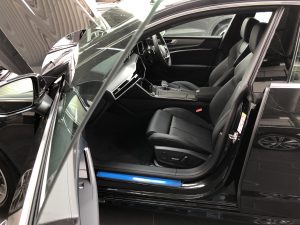
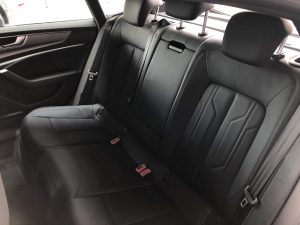

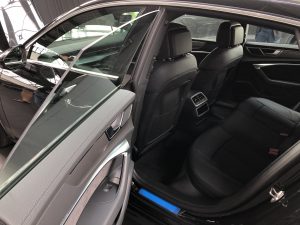
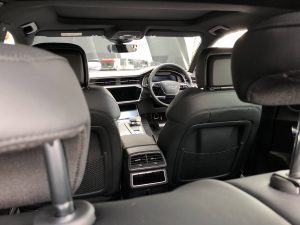
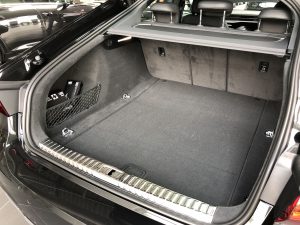
These functions are just two of a total of 39 driver assistance systems the A7 Sportback will offer to make daily use easier for the driver. They are split into three packages: Parking (gradual introduction beginning in 2018), City Assist (with the new Cross Traffic Assist Front feature) and Tour.
The latter includes features such as the efficiency assistant, which facilitates a driving style conducive to reducing consumption, and the adaptive driving assistant (ADA), which supplements the adaptive cruise assist with helpful steering interventions designed to keep the car in its marked lane. All driver assistance systems feature improved control mechanisms.

